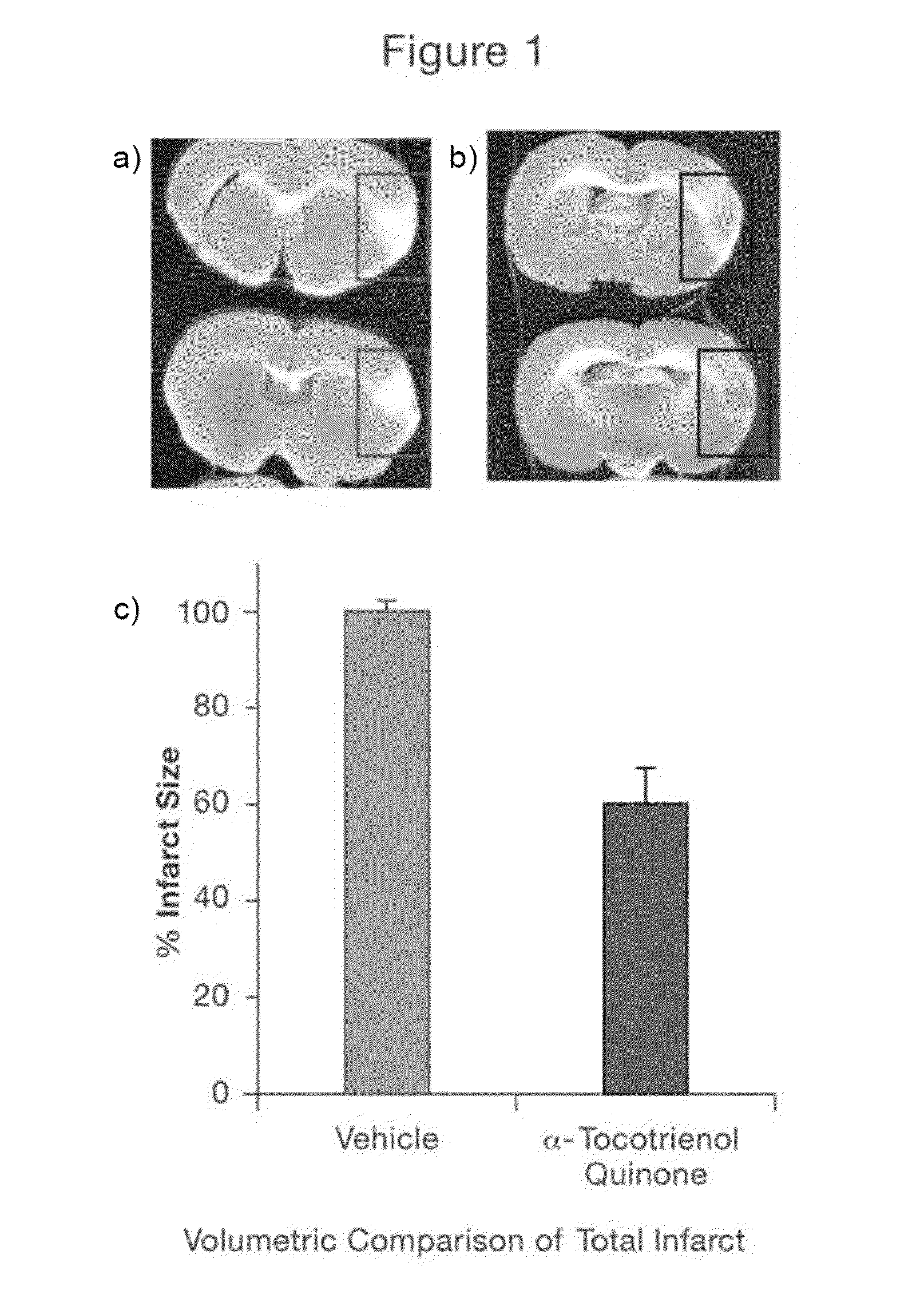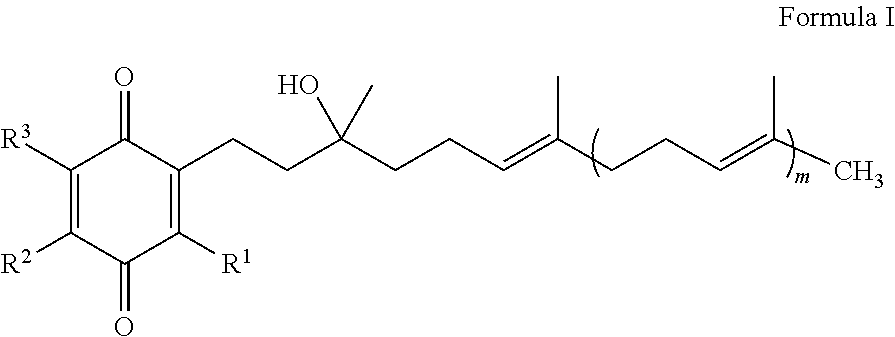Methods for the prevention and treatment of cerebral ischemia
a cerebral ischemia and treatment method technology, applied in the field of redoxactive therapeutics, can solve the problems of poor prognosis, neurologic morbidity and mortality,
- Summary
- Abstract
- Description
- Claims
- Application Information
AI Technical Summary
Benefits of technology
Problems solved by technology
Method used
Image
Examples
example 1
Cell-Based Assays for Determining the Ability of a Composition to Counteract Ischemic-Induced Neuronal Cell Injury and Cell Death.
[0093]Insults to the brain that disrupt its blood supply, as in ischemia, or its oxygen supply, as in hypoxia (low oxygen) or anoxia (zero oxygen), rapidly cause neuronal imbalance leading to cell death (Flynn et al. (1989) Ischemia and Hypoxia, pp. 783-810, In: Basic Neurochemistry, Siegel et al. (Eds.), Raven Press, New York). Cerebral ischemic insults are modeled in animals by occluding vessels to, or within, the cranium (Molinari (1986) Experimental models of ischemic stroke, pp. 57-73, In: Stroke:
[0094]Pathophysiology, Diagnosis and Management, Vol. 1, Barnett et al. (Eds.), Churchill Livingstone, N.Y.). In vitro models of ischemia use different means of oxygen and glucose deprivation, for example, by placing neuronal cultures into large anaerobic or hypoxic chambers and exchanging culture medium with oxygen-free and defined ionic composition media (...
example 2
Animal Cerebral Infarct Assay
[0109]This assay was used to assess the efficacy of the test agents in protecting the brain against necrosis following cerebral ischemia induced in rats. Middle Cerebral Artery Occlusion (MCAO) is a widely used technique to induce transient focal cerebral ischemia in animal models. It has been demonstrated that the rat model of MCAO is an appropriate approximation of ischemic damage in humans. Furthermore, this model accurately represents the involvement of middle cerebral artery (MCA), the most affected vessel in human stroke, and also allows reperfusion as it happens in humans.
Middle Cerebral Artery Occlusion (MCAO)
[0110]Male Sprague-Dawley rats (Hadan, Ind.) weighing 225-250 g were allowed free access to water and commercial rodent diet under standard laboratory conditions. The room temperature was maintained at 20-23° C. and room illumination was on a 12 / 12-hour light / dark cycle. The rats were acclimatized to the laboratory environment 5 to 7 days pr...
example 3
Human Subject Trial
[0114]This trial can be designed as a randomized, double-blind, placebo-controlled efficacy study of the therapy described herein in patients presenting with acute ischemic stroke. Patients are selected for the trial based on a set of eligibility criteria that can be determined for each study. For example, the criteria can include: age (e.g., 18-85 years), focal neurological deficit lasting at least 60 minutes, CT (or MRI) compatible with clinical diagnosis of acute ischemic stroke, and NIH Stroke Scale of at least 8. The exclusion criteria can include, e.g., severe coexisting systemic disease, preexisting medical conditions that may interfere with participation, and surgery that is required within 24 hours. The protocol for the study should be approved by the institutional review board of the institution where the trial is taking place and all patients or their legal representatives should sign an informed consent.
[0115]The primary objective of this study is to d...
PUM
| Property | Measurement | Unit |
|---|---|---|
| pH | aaaaa | aaaaa |
| pH | aaaaa | aaaaa |
| pH | aaaaa | aaaaa |
Abstract
Description
Claims
Application Information
 Login to View More
Login to View More - R&D
- Intellectual Property
- Life Sciences
- Materials
- Tech Scout
- Unparalleled Data Quality
- Higher Quality Content
- 60% Fewer Hallucinations
Browse by: Latest US Patents, China's latest patents, Technical Efficacy Thesaurus, Application Domain, Technology Topic, Popular Technical Reports.
© 2025 PatSnap. All rights reserved.Legal|Privacy policy|Modern Slavery Act Transparency Statement|Sitemap|About US| Contact US: help@patsnap.com



